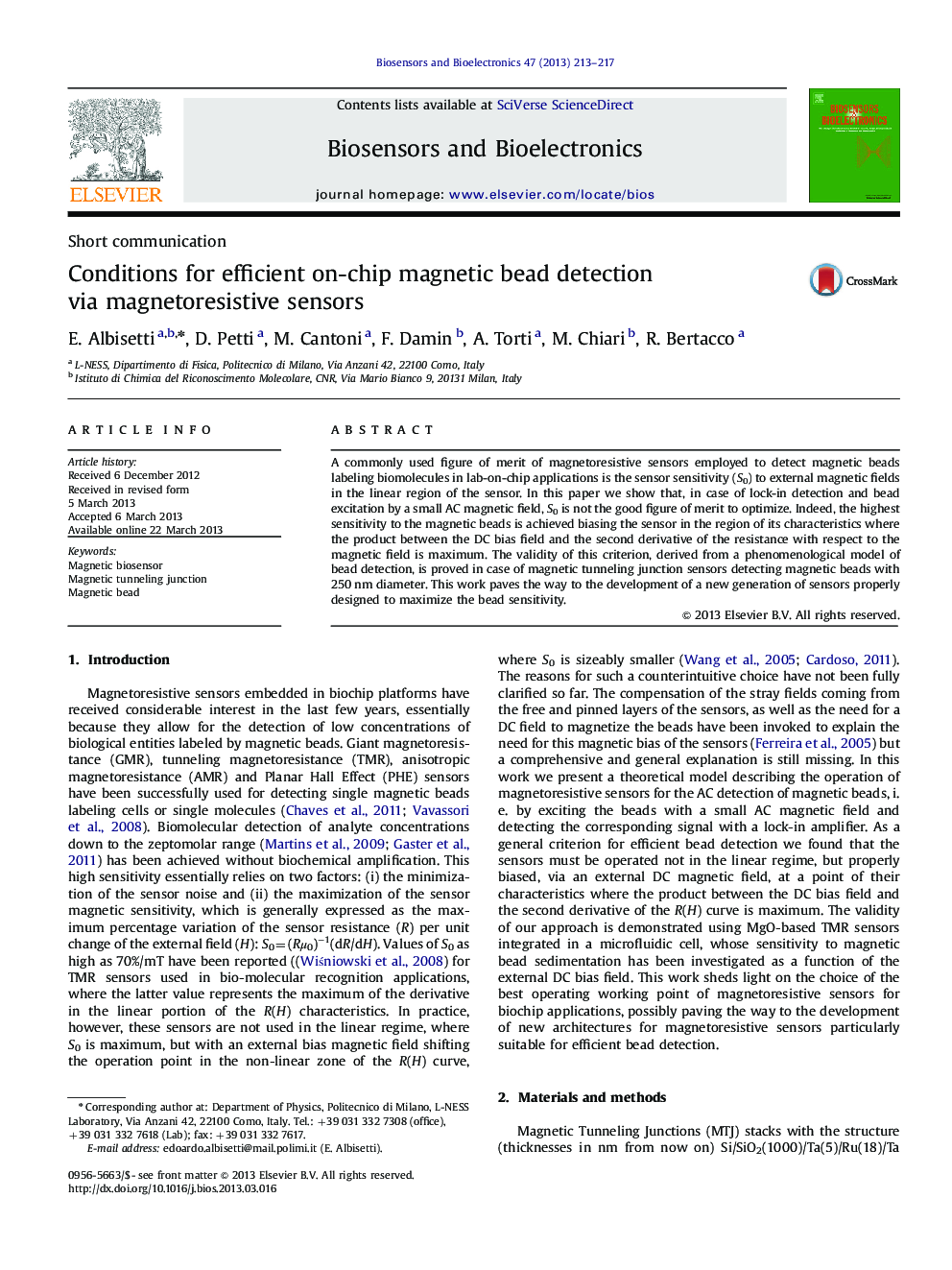| Article ID | Journal | Published Year | Pages | File Type |
|---|---|---|---|---|
| 867012 | Biosensors and Bioelectronics | 2013 | 5 Pages |
•We study the optimal conditions for bead detection in magnetoresistive sensors.•High sensitivity is achieved maximizing the second derivative of the R(H) curve.•Experiments of bead detection by magnetic tunnel junctions validate this approach.
A commonly used figure of merit of magnetoresistive sensors employed to detect magnetic beads labeling biomolecules in lab-on-chip applications is the sensor sensitivity (S0) to external magnetic fields in the linear region of the sensor. In this paper we show that, in case of lock-in detection and bead excitation by a small AC magnetic field, S0 is not the good figure of merit to optimize. Indeed, the highest sensitivity to the magnetic beads is achieved biasing the sensor in the region of its characteristics where the product between the DC bias field and the second derivative of the resistance with respect to the magnetic field is maximum. The validity of this criterion, derived from a phenomenological model of bead detection, is proved in case of magnetic tunneling junction sensors detecting magnetic beads with 250 nm diameter. This work paves the way to the development of a new generation of sensors properly designed to maximize the bead sensitivity.
